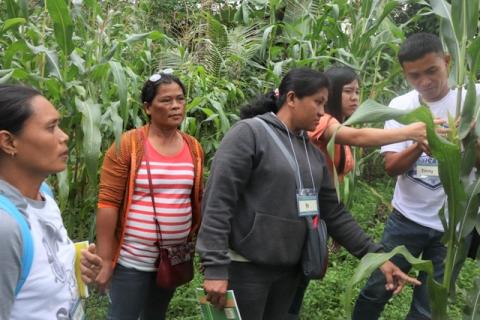The GAP training for corn included activities like identification of pests and diseases, integrated pest and disease management, and a workshop proper of common production practices among corn farmers.
Pangantucan, BUKIDNON---Realizing the significance of corn as food and feeds in the region, a training course on Good Agricultural Practices (GAP) for Corn attended by 60 farmer participants from batch I and batch II was mounted recently in Claveria, Misamis Oriental on May 23-25 and Pangantucan, Bukidnon on June 20-22 respectively. The training intends to create a core of municipal-level trainers on GAP for corn towards GAP compliance and certification. Activities include identification of pest and diseases in corn, integrated pest and disease management, and a workshop proper of common production practices among corn farmers.
GAP approach aims to apply practical and scientific knowledge to address environmental, economic and social sustainability dimensions for on-farm production and post-production processes, resulting in safe and quality food and non-food agricultural products.
Philippine-GAP is a set of consolidated safety and quality standards formulated by the Department of Agriculture (DA) for the production, harvesting and on- farm post-harvest handling and storage of different crops. This code of practice was emanated from Good Agricultural Practices (GAP) which is based on the concept of Hazard Analysis and Critical Control Points (HACCP) and Quality management principles from farm to table continuum. GAP corn is primarily aimed at providing safe and quality corn grits to consumers and feed millers/processors considering the increasing incidence of food borne illnesses and incidence of aflatoxicosis in swine, poultry and other animals. Additional benefits of the program are workers health, safety and welfare and environmental sustainability. (with reports from Noriel Kris O. Santillan, Training Specialist II)

